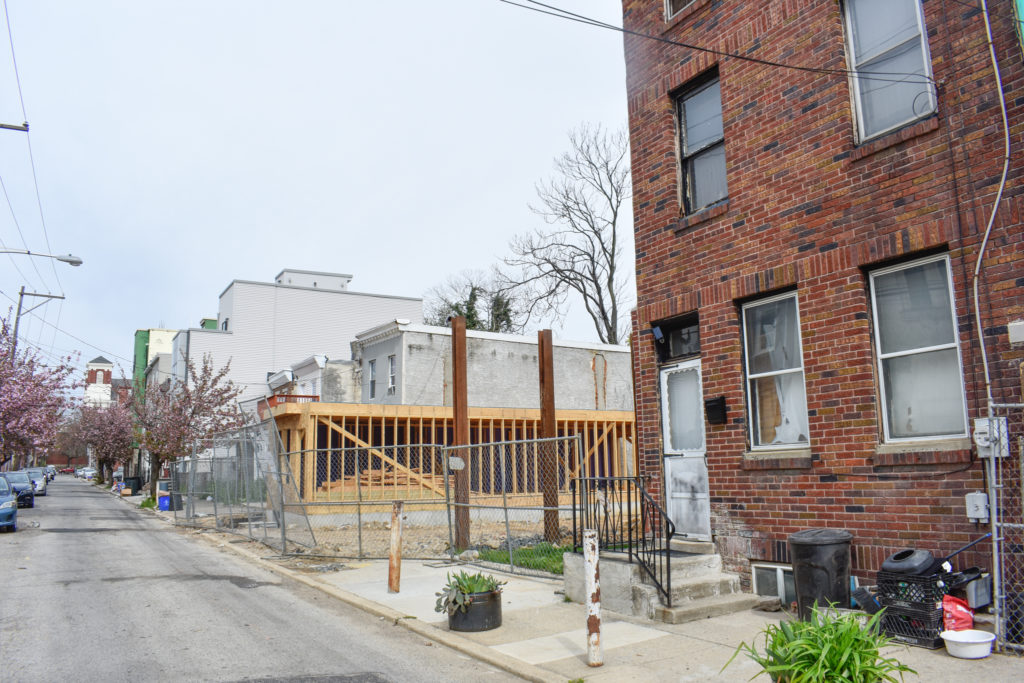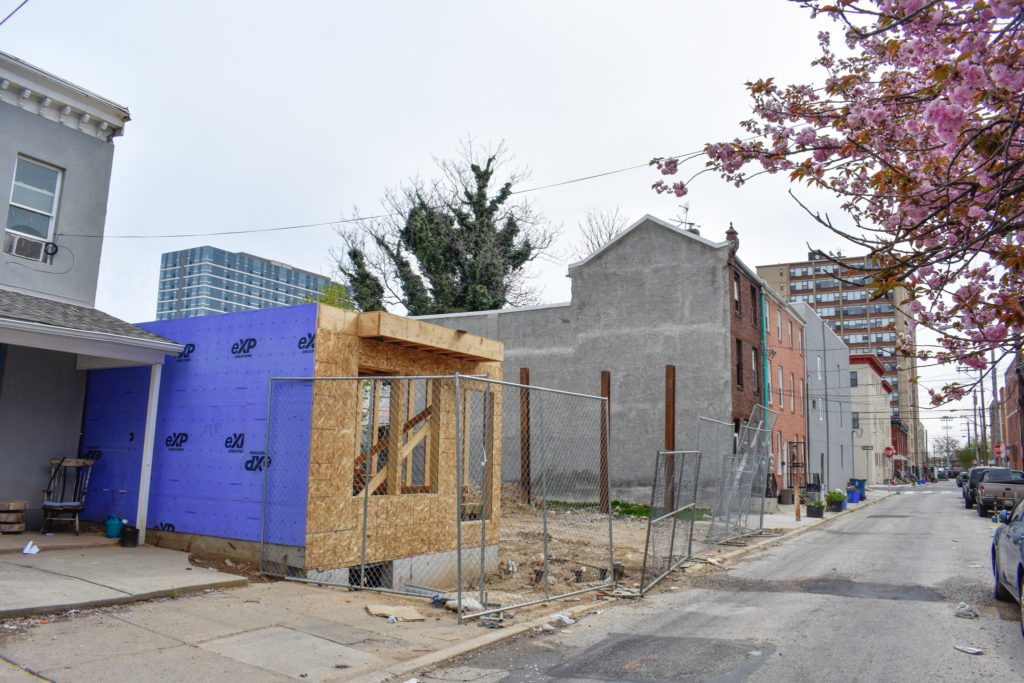In November 2020, Philly YIMBY reported that demolition permits have been filed for a three-story prewar rowhouse at 1513 West Stiles Street in Cecil B. Moore, Lower North Philadelphia. The single-family dwelling was situated on the north side of the block between North 15th Street and North 16th Street, just to the southwest of Temple University. A year and a half later, our recent site visit has revealed that the structure has since been torn down.
At the time, permits indicated that the property was owned by property is owned by Gregory C. Brown and Kyoko Brown and was to be dismantled as part of the City of Philadelphia demolition program. The permits listed Gama Wrecking Inc. as the contractor and specified a demolition cost of $19,559.

1513 West Stiles Street. Photo by Jamie Meller. April 2022
From a general perspective, the rowhouse was rather unremarkable; however, the red-brick structure with a raised porch and an ornate cornice, capped with turrets at either corner, was a classic example of the quintessential rowhouse vernacular that arguably represents Philadelphia more effectively than any other building type.
Like many other blocks throughout North Philadelphia and elsewhere in the city, much of the block’s rowhouse stock has been demolished during the postwar period, in a process that, as the building at 1513 West Stiles Street shows, continues to this day (at least one more rowhouse has been demolished on the block within the past few years). The process has left the block blighted with sprawling vacant lots, though in recent years these have been filling with new residential construction, which arrived as part of a two-decade-long development wave driven by Temple University’s continuing housing demand. One such development rises two lots away at 1515 West Stiles Street, which we covered in yesterday’s article.

1513 West Stiles Street. Photo by Jamie Meller. April 2022

1513 West Stiles Street. Photo by Jamie Meller. April 2022
It is always unfortunate to see classic rowhouses meet the wrecking ball. Ideally, we would have much preferred to see the building renovated, whether as a single-family residence or split into smaller apartments that are more budget-friendly to both university students and residents of the local working-class community. However, since the structure was torn down as part of the city demolition program, it was likely in a blighted state where it made more fiscal sense to knock it down than to renovate it.
We are certainly happy to see new development on the block and in the surrounding area. However, as our regular readers certainly know by now, we support both high-density new construction and preservation of prewar buildings. As such, we are concerned with the current state of local zoning, which effectively encourages tear-downs of rowhouses and their replacement with only marginally larger structures.
An opposite policy should be in effect at this university-adjacent, transit-proximate location (the Girard Station on the Broad Street Line, which offers a five-minute commute to Center City, sits two blocks to the east). Instead of restrictive zoning and lack of historic protections, the city ought to upzone the area by increasing the amount of housing that may be built on vacant sites while introducing protections for existing prewar rowhouses, which would both provide much-needed housing stock while preventing displacement via demolition in this traditionally working-class, minority-dominated community.
Subscribe to YIMBY’s daily e-mail
Follow YIMBYgram for real-time photo updates
Like YIMBY on Facebook
Follow YIMBY’s Twitter for the latest in YIMBYnews


Maybe some green space could be included in Temple’s housing….No??